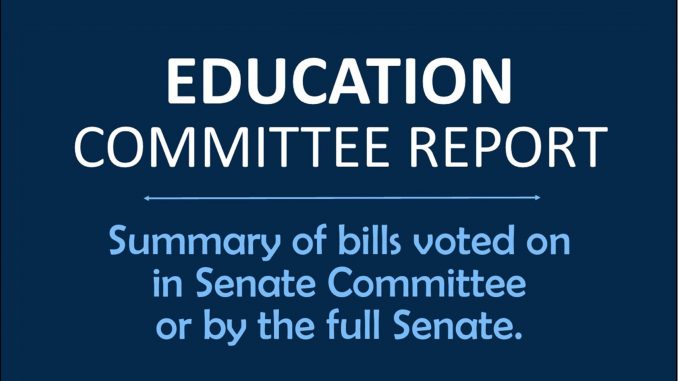
SF 455 – Equity in school district cost per pupil and transportation
FLOOR ACTION:
SF 455 is designed to equalize the state cost per pupil and transportation inequity costs in the school aid formula. A student’s ZIP code should not determine the amount of spending they receive.
First, the bill addresses the district cost per pupil disparity that stems from the 1970s, when the state adopted a school aid formula to take some of the burden off local property taxes. In doing so, lawmakers set a single state cost per pupil, based on enrollment and expenditures. Some school districts spent more per pupil, and were allowed to continue.
The formula defined a state cost per pupil and brought all districts that spent less than that amount up to the cost. This year, the state cost per pupil is $6,591. Half of all school districts are limited to this amount per pupil. The other 178 districts have a cost ranging from $6,592 to $6,766 per pupil, or $1 to $175 more per student. This extra amount is paid for with property taxes.
The bill makes these changes to the state cost per pupil inequities:
- Adds to the statewide cost per pupil after the annual calculation of Supplemental State Aid (SSA) to close the gap between the highest district costs per pupil and the statewide cost per pupil. The increase will be phased in over 10 years beginning in FY18:
- In FY18, $5 per pupil would be added
- In FY19, an additional $10 would be added (totaling $15)
- In FY20 to FY27, an additional $20 would be added annually (totaling $175), eliminating the difference between the highest district costs per pupil and the statewide cost per pupil.
- During implementation, school districts below the newly established statewide cost per pupil would receive additional funding under the current formula ($1 of property taxes for every $7 of state aid).
- During implementation, school districts above the newly established statewide cost per pupil would receive state aid to supplant property tax dollars under the current formula (for every $8 of increase in the statewide cost per pupil, these districts would supplant $7 property tax dollars with state aid dollars).
- At full implementation, all school districts in the state would have a district cost per pupil equal to the statewide cost per pupil. At full implementation, this provision should cost approximately $88 million.
Second, the bill addresses transportation costs. Right now transportation costs can compete with educational program costs, as both are paid from a school’s General Fund. There is a large difference in the transportation costs per student among school districts, due primarily to student density and distance factors. Transportation costs per pupil enrolled range from a low of $30 to a high of $1,150.
The transportation equity portion of the bill includes these elements:
- Creates supplementary weighting to offset the cost of transportation per pupil.
- The supplementary weighting will be phased in equally over 10 years beginning in FY18 and will be calculated using these factors:
- The three-year average of costs incurred for the transportation of students as required under Chapter 285, excluding those paid from PPEL and SAVE, at a 90 percent factoring.
- The district’s budget enrollment at a 5 percent factoring.
- The district’s route miles at a 5 percent factoring.
- Requires that funding received for the transportation supplementary weighting can only be used for transportation costs incurred in providing mandatory transportation.
This provision will have a $130 million annual impact when fully implemented.
[3/8: 7-0 (Anderson, Bertrand, Greene excused)]
